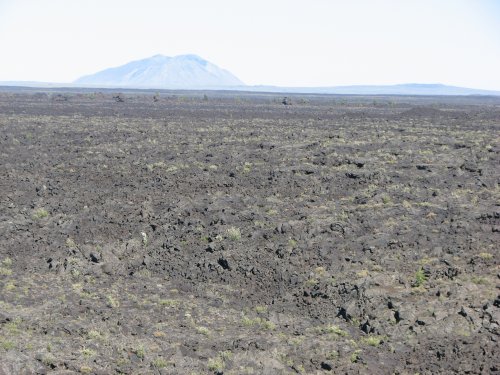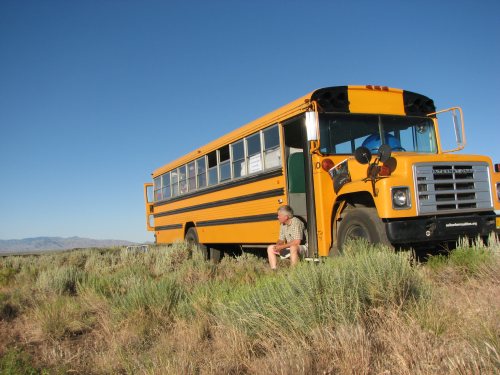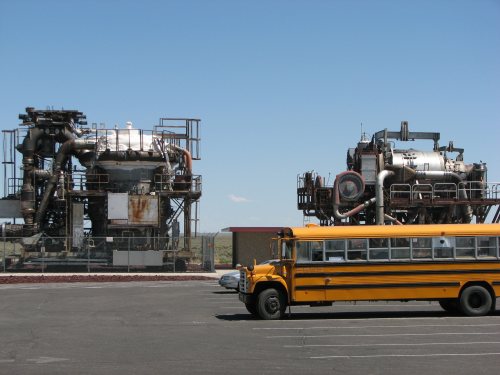 |
| Relatively recent lava flows, Craters of the Moon, Idaho |
Near Arco, Idaho, I passed by the recent lava fields left by the passage of the North American plate over the hotspot that is now under Yellowstone National Park. The older flows have developed pockets of soil that support sagebrush, currant bushes, grasses, and forbs. Spider webs spread over pockets of apparently lifeless black lava, catching seeds, insects, and bits of organic material.
 |
| At night, I've been sleeping out of the bus under the thousands of stars, which like our sun are powered by nuclear fusion reactions that balance and counteract the forces of gravitational collapse. All life is ultimately powered by this energy. |
At midday today, a weather and other instrument panel at a roadside rest stop recorded 987 watts per square meter of incoming solar energy. I'm using some of this with a solar panel, but this energy capture is dwarfed by solar energy capture by plants. Though plants are much less "efficient" than even mediocre photovoltaic panels, they maintain and reproduce themselves and arise willy-nilly on soils that are able to absorb and retain some moisture.
 |
| Two experimental nuclear reactors developed in the late 1950s as possible aircraft engines, at the Experimental Breeder Reactor 1 Museum near Arco, Idaho. President Kennedy terminated this billion-dollar program in 1961. The reactors power turbine engines and have substantial mounts to hold them for testing. |
The EBR-1 atomic energy museum near Arco, Idaho, was a fascinating stop. EBR-1 was the first nuclear power plant, and was a breeder reactor, producing plutonium fuel from U-238, and cooled with a mixture of sodium and potassium (NaK). A later design, EBR-2, underwent a successful full-power passive shutdown (no auxiliary power, natural convective cooling of the core via the sodium coolant) one month before the Chernobyl accident in 1986. President Bill Clinton shut down EBR-2 in 1994.
The museum presents EBR-I and EBR-II as successful trials of technology that was later abandoned. In 1961, President Kennedy predicted that half of U.S. electricity would come from atomic power by 2000. But it is coal power that has remained dominant. And our focus on energy leans toward the technological, rather than toward the vastly more powerful, but less efficient, biological energy that is spread out, gradual, and kind of quiet -- at least in eastern Idaho in July.


